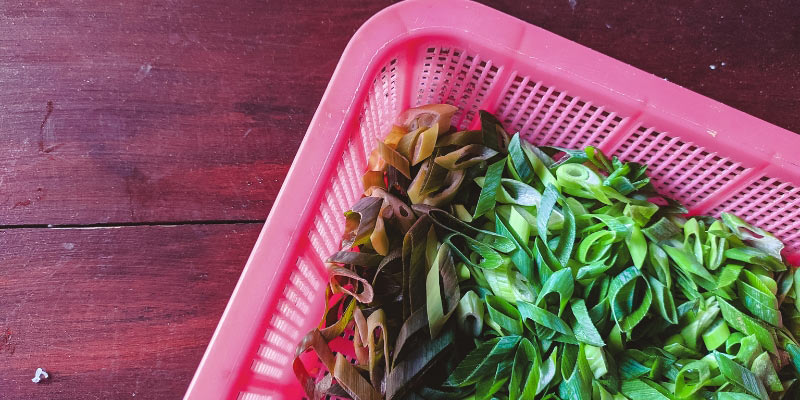Roman-Jewish sautéed artichokes, another name for Carciofi alla Giudia, have been a favorite side dish for countless generations of people worldwide. When you combine fried artichokes with the gentle flavors of Mediterranean food, you get a traditional Roman-Jewish feast that is both fancy and delicious. This meal has tastes from both countries. Before eating an artichoke, you have to remove its upper leaves and trim its stem. Artichokes come from the same family as sunflowers. The plant's heart is left alone to stay soft and moist, but the leaves are blanched in hot oil until they turn brown and crisp.
The result is a delicious mix of different textures and tastes brought out by the bitterness. The mix will make you almost want to drool. Whether you eat them as an appetizer, side dish, or main course, Roman-Jewish fried artichokes will transport you to Rome's cobbled streets.

HOW TO REMOVE THE ARTICHOKE CHOKE ANYWAY?
Even though artichokes come in many different sizes, I only cooked with the small ones called "baby artichokes." Since they are small, less cooking oil is needed to make them. Also, there is no choke or cloudy middle that you must clear out before eating. The names of these terms come from the fact that they can make you feel like you're suffocating on them. The best thing to add on! But you can use smaller artichokes instead of the bigger ones in this meal. Just check to see if the thing blocking it is no longer there. For this purpose, you can cut them in half before cooking them or cut them in half after the first sauté and then scrape out the middle before putting the halves back together.

ARE FRIED ARTICHOKES JEWISH?
Did you know that artichokes sautéed in oil make up a popular Jewish dish? Even though Roman Jews liked artichokes, most Roman Italians did not like them, especially when they were sautéed. In current times, artichokes have become a special treat in Italy. Fried artichokes are a great snack, which shouldn't be a big surprise. Steps to Make It:
- Gather the ingredients.
- Start by taking off the artichoke's upper leaves. Then, peel off the artichoke's darker, woody layers until you reach its softer heart. At each ring of the artichoke, you'll need to pull off a more petite and easier-to-manage section of leaves. Cut across the artichoke in a straight line, just past where the leaves start to turn in. Because of this, you can cut off about a quarter of the top of the artichoke. The next step is to cut through the top of the artichoke while keeping the knife almost straight up and down from the surface. This will give you access to the tiny leaves in the middle of the flower to eliminate any spines there.
- After this step, you need to cut off the black tip of the stem. This will reveal a ring in the middle of the split surface. The rough and brittle top skin of an artichoke can sometimes be found outside the ring around the stem. On the other hand, what is inside is a tasty and delicate extension of the heart. After you peel or cut off the tough outer layer, you can keep the artichoke from turning black by rubbing it with a sliced lemon with only half of its juice squeezed out. When you're done, put the artichoke in a bowl of water with the juice of one lemon and move on to the subsequent artichoke. You can prepare all of the artichokes by just following the steps above.
- Add three inches (eight centimeters) of olive oil or, if you prefer, a high-smoke-point oil to a deep, wide pot. The pan should be big enough to keep the artichokes level, and the oil should almost cover them. Heat the pan over medium heat. Almost all of the artichokes should be covered with oil.
- Let the artichokes drain on a layer of absorbent paper on paper towels while the dish heats up. Salt and pepper should be put on the inside and outside of the artichokes. Any extra should then be shaken off.
- The artichokes should be cooked in hot oil for ten minutes. They should be turned over often to ensure they cook evenly during that time. After you put the artichokes in the oil, give everything a good stir to coat them. It's essential to put them on a plate with absorbent paper on it. They are only about half done at this point, but you can keep cooking them whenever it works best for you. Start by putting the first artichoke flat in the oil. Then, heat the oil since you will cook the artichokes instead of just rewarming them in the hot oil. After the oil has been heated, place the first artichoke in it so that it is standing up.
- Fry the artichoke for three to four minutes or until the stem is browned. Then, use long-handled tools, like BBQ forks or metal cooking tools, to turn it over so that the stem faces up and the top sits on the bottom of the pot. The artichoke should be turned over so that the stem faces up and the top sits on the bottom of the pot. Because the bottom of the pan is hot, even a little pressure will make the artichoke open up like a flower, and the leaves will turn brown.
- While the artichokes are cooking, line the second dish with paper towels. You can do this while you wait for the artichoke to be done. After removing the flower from the first artichoke, move on to the next one in the line. The desired result will happen when the artichokes are cooked until they are as soft as you want.
- When it's ready, serve it with lemon slices on the side.
Conclusion:
In conclusion, Roman-Jewish fried artichokes are a great meal because they blend the tastes and cooking methods from two different but equally good food cultures. The outside of the fried artichokes is golden, and the inside is soft and tasty, making them both a sight to see and a taste to enjoy.
This meal is a celebration of how artichokes can be used in different ways and how Roman-Jewish food has always been a mix of different cultures. These tasty fried artichokes, a side dish or the main course, are a great example of how different types of food can be creative and unique. Roman-Jewish cooked artichokes are a great way to satisfy your taste for history and sophistication at the same time.




